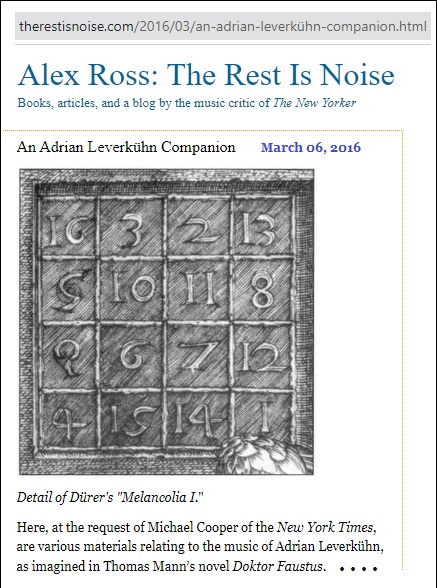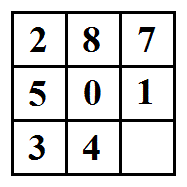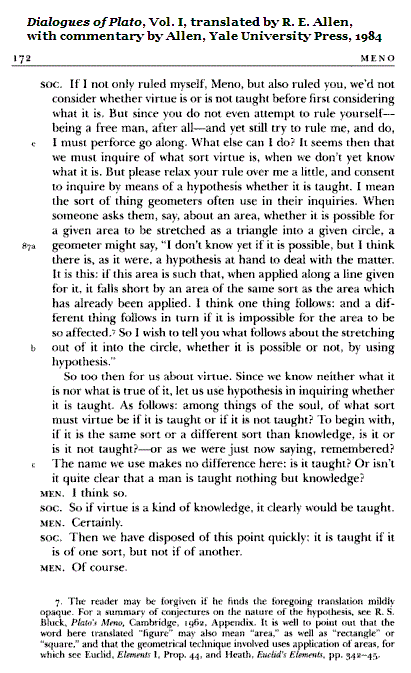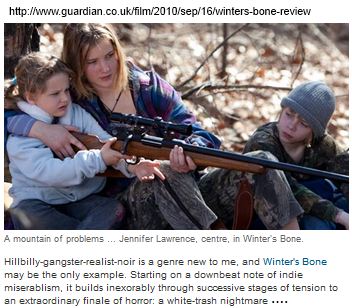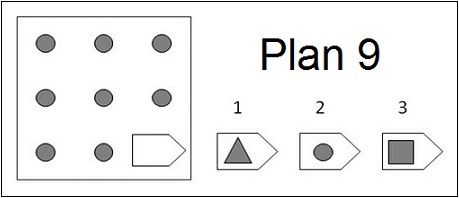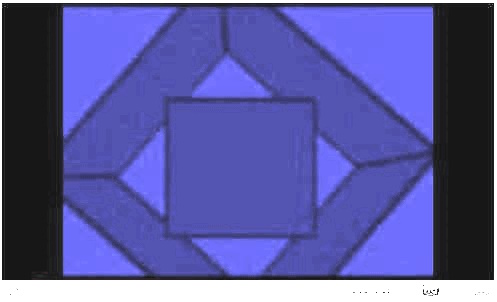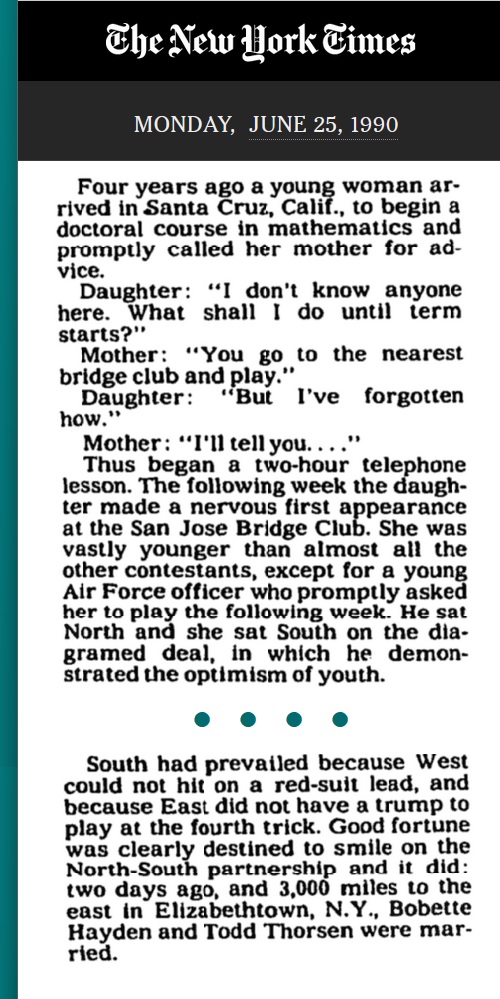
Wednesday, November 29, 2023
Cards of Identity . . . by B. Traven
Friday, April 14, 2023
Sunday, March 6, 2016
Friday, January 15, 2016
Enter Raven
Suggested by a passage at dazeddigital.com —
"Visser remembers the night everything changed
as if it was yesterday. It was February 3, 2010,
and the band had been booked to play a show
in Johannesburg."
Monday, August 31, 2015
Nightmare for Wes Craven
Adapted from posts tagged Cryptomorphisms
in this journal:

"Hear it not, Craven, for it is a knell
That summons thee to heaven, or to hell. “

Max von Sydow in Branded (2012)
Tuesday, January 22, 2013
Raven Light
"…a fundamental cognitive ability known as 'fluid' intelligence: the capacity to solve novel problems, to learn, to reason, to see connections and to get to the bottom of
…matrices are considered the gold standard of fluid-intelligence tests. Anyone who has taken an intelligence test has seen matrices like those used in the Raven’s: three rows, with three graphic items in each row, made up of squares, circles, dots or the like. Do the squares get larger as they move from left to right? Do the circles inside the squares fill in, changing from white to gray to black, as they go downward? One of the nine items is missing from the matrix, and the challenge is to find the underlying patterns— up, down and across— from six possible choices. Initially the solutions are readily apparent to most people, but they get progressively harder to discern. By the end of the test, most test takers are baffled."
— Dan Hurley, "Can You Make Yourself Smarter?," NY Times , April 18, 2012
See also "Raven Steals the Light" in this journal.
Related material:
Plan 9 from MIT and, perhaps exemplifying crystallized rather than fluid intelligence, Black Diamond.
Friday, June 8, 2012
Friday, June 11, 2010
The Raven
"Why is a raven like a writing-desk?" — Alice's Adventures in Wonderland
Arthur Koestler, The Roots of Coincidence —
"In his The Nature of the Physical World (1928) Sir Arthur Eddington introduced his famous 'parable of the two writing desks.' One is the antique piece of furniture on which his elbows solidly rest while writing; the other is the desk as the physicist conceives it, consisting almost entirely of empty space, sheer nothingness…. Eddington concluded:
In the world of physics we watch a shadowgraph performance of familiar life. The shadow of my elbow rests on the shadow-table as the shadow-ink flows over the shadow-paper….
Though the constituents of matter could be described with great mathematical accuracy as patterns of vibrations, the question remained— what was it that vibrated? On the one hand, these matter-waves produced physically real phenomena, such as interference patterns on a screen, or the currents in a transistor radio. On the other hand, the whole conception of matter-waves excludes by definition any medium with physical attributes as a carrier of the waves. A wave is movement; but what is that something that moves, producing the shadows on Eddington's shadow-desk? Short of calling it the grin of the Cheshire Cat, it was named the 'psi field' or 'psi function.'"
What is it that moves? Perhaps not the Cheshire Cat, but rather The Raven—
Closeup, he’s blue—streaked iris blue, india-ink blue—and
black—an oily, fiery set of blacks—none of them
true—as where hate and order touch—something that cannot
become known. Stages of black but without
graduation. So there is no direction.
All of this happened, yes.
— Jorie Graham, "The Dream of the Unified Field"
See also notes on darkness in this journal.
Thursday, January 11, 2024
Saturday, December 23, 2023
Twining with Mingles

"I will twine with my mingles of raven black hair
With the roses so red and the lilies so fair"
— Song lyric
Sunday, October 29, 2023
For Nevermore Academy
Log24 on Friday, April 14, 2023 —
“Why is a raven like a writing desk?”
Elsewhere on that date —
See also Eric Sheng at
https://www.ericshengphotography.com/about-avenue
and https://www.instagram.com/ericshengphoto/.
Sunday, August 7, 2022
For the Church of the Wicked Stepmother:
Progressive Matrices
A sample Raven's Progressive Matrices test item —


Update of 10 AM ET Sunday, August 7, 2022 —
See as well Siobhan Roberts on geometry in The New York Times
on March 22, 2022, and a Log24 post on geometry on that date.
Monday, January 17, 2022
Finest Trick
"The Magician’s finest trick was to
dismantle the pretensions of genius
while preserving his own lofty stature."
— Alex Ross in The New Yorker , Jan. 17, 2022
Related material —
Meanwhile . . .
Tuesday, November 6, 2018
Desert Notes*
A November 1 LA Times article about a book to be published today —
Why did Jonathan Lethem
turn toward the desert
in 'The Feral Detective'?
See also searches in this journal for Desert and, more particularly,
Point Omega and Mojave.
* The title of a book by Barry Holstun Lopez.
Friday, October 26, 2018
Pathmark Meets Hallmark
From earlier posts now tagged Pathmark —

From earlier posts tagged Black Diamond —
A source for the above Ellison quote —
See also A Christmas Carol.
Wednesday, March 21, 2018
WISC RISC
WISC = Wechsler Intelligence Scale for Children
RISC = Reduced Instruction Set Computer or
Rust Inventory of Schizotypal Cognitions
See related material in earlier WISC RISC posts.
See also . . .
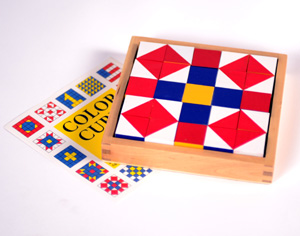
"Many parents ask us about the Block Design section
on the WISC and hope to purchase blocks and exercises
like those used on the WISC test. We explain that doing that
has the potential to invalidate their child's test results.
These Froebel Color Cubes will give you a tool to work with
your child on the skills tested for in the Block Design section
of the WISC in an ethical and appropriate way. These same
skills are applicable to any test of non-verbal reasoning like
the NNAT, Raven's or non-verbal sections of the CogAT or OLSAT. "
For a webpage that is perhaps un ethical and in appropriate,
see Block Designs in Art and Mathematics.
Sunday, July 2, 2017
Practically Cubist
From an Anthony Lane movie review in the April 8, 2013,
issue of The New Yorker —
"When the Lord God forbade his worshippers to bow down
before any graven image, [Rosario] Dawson’s face was
exactly the kind of thing He had in mind. No other star can
boast such sculptured features—except Vincent Cassel,
who is pretty damn graven himself. When the two of them
make love, in 'Trance,' one strong bone structure pressed
against another, it’s like a clash of major religions. What if
they had a family? The kids would be practically Cubist."
As for the other film Lane reviewed in that issue, "Blancanieves" —
See Snow White + Cube in this journal.
See as well a related cartoon graveyard, also from April 8, 2013.
Friday, March 3, 2017
PSI
(Notes for Josefine, continued from December 22, 2013)
From a prequel to The Shining , by Stephen King—
You had to keep an eye on the boiler
because if you didn’t, she would creep on you.
What did that mean, anyway? Or was it just
one of those nonsensical things that sometimes
came to you in dreams, so much gibberish?
Of course there was undoubtedly a boiler
in the basement or somewhere to heat the place,
even summer resorts had to have heat sometimes,
didn’t they (if only to supply hot water)? But creep ?
Would a boiler creep ?
You had to keep an eye on the boiler.
It was like one of those crazy riddles,
why is a mouse when it runs,
when is a raven like a writing desk,
what is a creeping boiler?


A related figure —

Saturday, March 19, 2016
To Sum It
"To sum it all up I see mathematical activity as
a jumping ahead and then plodding along
to chart a path by rational toil."
— Verena Huber-Dyson, Feb. 15, 1998
"VERENA HUBER-DYSON, mathematician and logician,
died yesterday [March 12, 2016] in Bellingham, Washington,
at the age of 92. She was Emeritus Professor of the
Philosophy Department, University of Calgary, Alberta."
— John Brockman at edge.org, March 13, 2016
Some posts from earlier this month are related to mathematical
activity, Bellingham, jumping ahead, and plodding along:
"The process of plodding is being analyzed by proof theory,
a prolific branch of meta mathematics. Still riddled with questions
is the jumping." — Huber-Dyson, loc. cit.
Still riddled — "Why IS a raven like a writing desk?"
Saturday, January 9, 2016
Logos
Thursday, December 4, 2014
The Pony Argument
The title was suggested by this morning's post "Follow This."
From a previous incarnation of my home website, m759.com —
The second of the site's three pages mentions authors
Alfred Bester and Zenna Henderson :
"Bester and Henderson are particularly good at
fictional accounts of telepathy. The noted Harvard
philosopher W. V. Quine doubts such a thing exists,
but I prefer the 'There must be a pony' argument."
Related material: The date Nov. 27, 2014, in a web search today …

… in The Washington Post …
… and in this journal …
Thursday, November 27, 2014
In the Details
For the late novelist P. D. James, author of, among other things,
The Children of Men .
Michael Caine in the film of that book —

Detail —

Raven's Progressive Matrices example —
A quote for tellers of tales —
“There have long been rumors of a mythical Ninth Element
that grants ultimate power to the Wizard who masters it.
The Order of Magick says there is no such thing. But….”
— Website of Magicka: The Ninth Element Novel
Thursday, November 13, 2014
Progressive Matrix
Yesterday's post and recent Hollywood news suggest
a meditation on a Progressive Matrix —

Click to enlarge.
"My card."
Structurally related images —
A sample Raven's Progressive Matrices test item
(such items share the 3×3 structure of the hash symbol above):

Structural background —
Wednesday, November 12, 2014
Harrowing Cuteness
The title is a phrase from yesterday's post.
An example of harrowing cuteness:
Charlize Theron in "Young Adult" (2011) —
Related material for older adults: Ravenna and Nietzsche.
Monday, October 20, 2014
Saturday, May 10, 2014
Test Patterns
Raven’s Progressive Matrices intelligence test—

Wechsler Adult Intelligence Scale test—

Related art — (Click images for further details.)
Patterns suggesting those of the Raven test:
Patterns suggesting those of the Wechsler test:
The latter patterns were derived from the former.
Wednesday, May 7, 2014
Meanwhile, in São Paulo…
This post was suggested by last night’s posts on conceptual art
(in São Paulo) and on a quarter-to-three story.
From this journal on May 31, 2012:
Matrix Problem:

Click image for some related material.
Meanwhile…
A game released on the above date:

Sunday, December 22, 2013
PSI
From a prequel to The Shining , by Stephen King—
You had to keep an eye on the boiler
because if you didn’t, she would creep on you.
What did that mean, anyway? Or was it just
one of those nonsensical things that sometimes
came to you in dreams, so much gibberish?
Of course there was undoubtedly a boiler
in the basement or somewhere to heat the place,
even summer resorts had to have heat sometimes,
didn’t they (if only to supply hot water)? But creep ?
Would a boiler creep ?
You had to keep an eye on the boiler.
It was like one of those crazy riddles,
why is a mouse when it runs,
when is a raven like a writing desk,
what is a creeping boiler?
See also Steam.
For one answer to the riddle, click here.
Sunday, March 31, 2013
Monday, February 4, 2013
The Universe of Discourse
A Raven's Remark—
Related material:
Fish Story, Object Lesson, The Universe of Discourse,
Archimedes's Approximation of Pi, and…
Wednesday, January 30, 2013
The Problem Problem

Given these choices for a solution ,
what is a suitable problem ?
The problem sketched on Jan. 22 was a joke.
A more serious triangle-circle-square problem:
Introductory commentary from the same source—
See also a description of this problem by the late William Harris,
Harvard '48, Professsor Emeritus of Classics at Middlebury College,
who died on February 22, 2009*—
"… this is a very important element of method and purpose,
one which must be taken with great seriousness and respect.
In fact it is as good an example of the master describing for us
his method as Plato ever gives us. Tricked by the appearance
of brevity and unwilling to follow through Plato's thought on
the road to Euclid, we have garbled or passed over a unique
piece of philosophical information."
The problem itself, from the Perseus site:
[87a] whether a certain area is capable of being inscribed as a triangular space in a given circle: they reply—“I cannot yet tell whether it has that capability; but I think, if I may put it so, that I have a certain helpful hypothesis for the problem, and it is as follows: If this area is such that when you apply it to the given line of the circle you find it falls short by a space similar to that which you have just applied, then I take it you have one consequence, and if it is impossible for it to fall so, then some other. Accordingly I wish to put a hypothesis, before I state our conclusion as regards inscribing this figure [87b] in the circle by saying whether it is impossible or not.” In the same way with regard to our question about virtue, since we do not know either what it is or what kind of thing it may be, we had best make use of a hypothesis in considering whether it can be taught or not, as thus: what kind of thing must virtue be in the class of mental properties, so as to be teachable or not? In the first place, if it is something dissimilar or similar to knowledge, is it taught or not—or, as we were saying just now, remembered? Let us have no disputing about the choice of a name: [87c] is it taught? Or is not this fact plain to everyone—that the one and only thing taught to men is knowledge?
Meno
I agree to that.
Socrates
Then if virtue is a kind of knowledge, clearly it must be taught?
Meno
Certainly.
Socrates
So you see we have made short work of this question—if virtue belongs to one class of things it is teachable, and if to another, it is not.
Meno
To be sure.
For further details, consult (for instance) a 1955 paper at JSTOR.
* See a post from that date in this journal.
See also a remark by Harris:
"Scholarship has many dark ages, and they do not all fall
in the safe confines of remote antiquity."
Tuesday, January 22, 2013
The Problem Problem
For connoisseurs of psychological tests,
here is an inverse puzzle:

Given these choices for a solution ,
what is a suitable problem ?
There is, of course, no single right answer.
One path to an answer might involve
a British webpage and the recent film Branded.

Max von Sydow in Branded (2012)
(See, too, related remarks on The Queen's Privy Council.)
Sunday, October 21, 2012
Friday, October 19, 2012
Torpedo… LOS!
"Hitchcock made movies with many actresses
who had the aloof, Nordic beauty he admired."
— Alessandra Stanley in today's NY Times
Aloof, Nordic…
Freeze Frame

Related material:
Sunday, September 23, 2012
Plan 9 (continued)–
In Like Flynn
From the Wall Street Journal site Friday evening—
| ESSAY September 21, 2012, 9:10 p.m. ET
Are We Really Getting Smarter? Americans’ IQ scores have risen steadily over the past century.
|
No, thank you. I prefer the ninth configuration as is—

Why? See Josefine Lyche’s art installation “Grids, you say?“
Her reference there to “High White Noon” is perhaps
related to the use of that phrase in this journal.
The phrase is from a 2010 novel by Don DeLillo.
See “Point Omega,” as well as Lyche’s “Omega Point,”
in this journal.
The Wall Street Journal author above, James R. Flynn (born in 1934),
“is famous for his discovery of the Flynn effect, the continued
year-after-year increase of IQ scores in all parts of the world.”
—Wikipedia
His son Eugene Victor Flynn is a mathematician, co-author
of the following chapter on the Kummer surface— 
For use of the Kummer surface in Buddhist metaphysics, see last night’s
post “Occupy Space (continued)” and the letters of Nanavira Thera from the
late 1950s at nanavira.blogspot.com.
These letters, together with Lyche’s use of the phrase “high white noon,”
suggest a further quotation—
You know that it would be untrue
You know that I would be a liar
If I was to say to you
Girl, we couldn’t get much higher
See also the Kummer surface at the web page Configurations and Squares.
Wednesday, August 22, 2012
About the People
(Continued from March 28, 2001)
"Hillbillies, Okies, Arkies— they're all the same people."
— Hunter S. Thompson, Hell's Angels
Related cinematic art:
Hunger Games (2012)—
Winter’s Bone (2010)—
Thursday, June 7, 2012
Thursday, May 31, 2012
Matrix Problem
Poster from Walpurgisnacht 2012
Raven’s Progressive Matrices problem:
Click the problem for a related story.
For some related geometry, see Elements Diamond.
See also a post (Dream Time, May 3, 2010)
about geometry and an earlier Walpurgisnacht.
Black Diamond

“To say more is to say less.”
― Harlan Ellison, as quoted at goodreads.com
Saying less—
- Home Schooling for the Hunger Games (last Thursday)
- Black diamonds in last Saturday's Talk Amongst Yourselves
- Last night's New York Times obituaries
Thursday, May 24, 2012
Home Schooling…
For The Hunger Games
Spoiler Alert
For readers unfamilar either with the film "Point of No Return"
or with the "Raven's Progressive Matrices" intelligence test,
here is a spoiler alert. This post links to details of both.
Backstory— The above film and Raven in this journal
Part I: Problem b in this intelligence test
Part II: Take Your Pick in this journal (Dec. 16, 2011)
Part III: Pick
Friday, April 27, 2012
Paradigms Lost continues…
This post was suggested by Paradigms Lost
(a post cited here a year ago today),
by David Weinberger's recent essay "Shift Happens,"
and by today's opening of "The Raven."
David Weinberger in The Chronicle of Higher Education , April 22—
"… Kuhn was trying to understand how Aristotle could be such a brilliant natural scientist except when it came to understanding motion. Aristotle's idea that stones fall and fire rises because they're trying to get to their natural places seems like a simpleton's animism.
Then it became clear to Kuhn all at once. Ever since Newton, we in the West have thought movement changes an object's position in neutral space but does not change the object itself. For Aristotle, a change in position was a change in a quality of the object, and qualitative change tended toward an asymmetric actualization of potential: an acorn becomes an oak, but an oak never becomes an acorn. Motion likewise expressed a tendency for things to actualize their essence by moving to their proper place. With that, 'another initially strange part of Aristotelian doctrine begins to fall into place,' Kuhn wrote in The Road Since Structure ."
Dr. John Raven (of Raven's Progressive Matrices)—
"… these tools cannot be immediately applied within our current workplaces, educational systems, and public management systems because the operation of these systems is determined, not by personal developmental or societal needs, but by a range of latent, rarely discussed, and hard to influence sociological forces.
But this is not a cry of despair: It points to another topic which has been widely neglected by psychologists: It tells us that human behaviour is not mainly determined by internal properties— such as talents, attitudes, and values— but by external social forces. Such a transformation in psychological thinking and theorising is as great as the transformation Newton introduced into physics by noting that the movement of inanimate objects is not determined by internal, 'animistic,' properties of the objects but by invisible external forces which act upon them— invisible forces that can nevertheless be mapped, measured, and harnessed to do useful work for humankind.
So this brings us to our fourth conceptualisation and measurement topic: How are these social forces to be conceptualised, mapped, measured, and harnessed in a manner analogous to the way in which Newton made it possible to harness the destructive forces of the wind and the waves to enable sailing boats to get to their destinations?"
Before Newton, boats never arrived?
Sunday, April 22, 2012
Plan 9 from MIT
Click image for some context from MIT.
Background from The New York Times— "Can You Make Yourself Smarter?"
See also "Plan 9" in this journal.
Saturday, November 12, 2011
Professor Dodge
From today's previous post, a fragmentary thought—
"Professor Dodge and the underground artists
whose work he helped save are the subjects of a book…"
|
Jim Dodge, Stone Junction (a novel first published in 1989) From pages 206-208, Kindle Edition— `Have you seen it?' Volta hesitated. `Well, I've dreamed it.' Daniel shook his head. `I'm getting lost. You want me to vanish into your dreams?' `Good Lord, no,' Volta blanched. `That's exactly what I don't want you to do.' `So, what is it exactly you do want me to do?' `Steal the diamond.' `So, it's a diamond?' `Yes, though it's a bit like saying the ocean is water. The diamond is perfectly spherical,* perfectly clear— though it seems to glow— and it's about two-thirds the size of a bowling ball. I think of it as the Diamond. Capital D.' `Who owns it?' `No one. The United States government has it at the moment. We want it. And to be honest with you, Daniel, I particularly want it, want it dearly. I want to look at it, into it, hold it in my hands. I had a vision involving a spherical diamond, a vision that changed my life, and I want to confirm that it was a vision of something real, the spirit embodied, the circuit complete.' Daniel was smiling. `You're going to love this. That dream I wanted to talk to you about, my first since the explosion? It just happened to feature a raven with a spherical diamond in its beak. Obviously, it wasn't as big as a bowling ball, and there was a thin spiral flame running edge to edge through its center, which made it seem more coldly brilliant than warmly glowing, but it sounds like the same basic diamond to me.' `And what do you think it is?' `I think it's beautiful.' Volta gave him a thin smile. `If I were more perverse than I already lamentably am, I would say it is the Eye of the Beholder. In fact, I don't know what it is.' `It might be a dream,' Daniel said. `Very possibly,' Volta agreed, `but I don't think so. I think— feel , to be exact— that the Diamond is an interior force given exterior density, the transfigured metaphor of the prima materia , the primordial mass, the Spiritus Mundi . I'm assuming you're familiar with the widely held supposition that the entire universe was created from a tiny ball of dense matter which exploded, sending pieces hurtling into space, expanding from the center. The spherical diamond is the memory, the echo, the ghost of that generative cataclysm; the emblematic point of origin. Or if, as some astrophysicists believe, the universe will reach some entropic point in its expansion and begin to collapse back into itself, in that case the Diamond may be a homing point, the seed crystal, to which it will all come hurtling back together— and perhaps through itself, into another dimension entirely. Or it might be the literal Philosopher's Stone we alchemists speak of so fondly. Or I might be completely wrong. That's why I want to see it. If I could actually stand in its presence, I'm convinced I'd know what it is. I would even venture to say, at the risk of rabid projection, that it wants to be seen and known.' `But you're not even sure it exists,' Daniel said. `Right? And hey, it's tough to steal something that doesn't exist, even if you can be invisible. The more I think about this the less sense it makes.' * Here Dodge's mystical vision seems akin to that of Anthony Judge in "Embodying the Sphere of Change" (St. Stephen's Day, 2001). Actually, the cube, not the sphere, is the best embodiment of Judge's vision. |
See also Tuesday's "Stoned" and the 47 references
to the term "bowling" in the Kindle Stone Junction .
Furthermore… Live from New York, it's Saturday Night!
Sunday, June 19, 2011
Monday, April 12, 2010
Mathematics and Narrative, continued
Saturday's post quoted a mathematical narrative with the following opening sentence–
"Let G be a finite, primitive subgroup of
If that narrative were a novel, its opening might win a Bulwer-Lytton prize.
As might the opening of another nonfiction narrative—
"What are we are doing?"
A partial answer to this profound metaphysical question
for fans of the classic film "Dark City"
(which was written in part by one "Lem Dobbs")–
Part I — Fiction —
Wednesday August 4, 2004Shell Beach “It was a dark and stormy night….” – Opening of A Wrinkle in Time, a classic novel by Madeleine L’Engle. For those who seek religious significance in the name of Hurricane Alex: “Alex Proyas directs this futuristic thriller about a man waking up to find he is wanted for brutal murders he doesn’t remember. Haunted by mysterious beings who stop time and alter reality, he seeks to unravel the riddle of his identity.” – Description of the 1998 film Dark City
[See also June 14, 2005.] |
Part II — Nonfiction —
Part III — Fiction —
"The bench on which Dobbs was sitting
was not so good."
— B. Traven, opening sentence
of The Treasure of the Sierra Madre
Thursday, July 2, 2009
Thursday July 2, 2009
Hieron Grammaton, Part III*
The Old Man and the Light
In memory of
Ernest Hemingway,
who died on this date
in 1961, a story
in three parts:
I — Eye of Raven
Fermata
II — Psyche and Symbol
Leonard Baskin, detail of
cover for Jung’s
Psyche and Symbol
III — Raven Steals the Light
Detail from the story
“Raven Steals the Light”
Midrash:
“To the earnestness of death belongs precisely that capacity for awakening, that resonance of a profound mockery which, detached from the thought of the eternal, is an empty and often brash jest, but together with the thought of the eternal is just what it should be….” —Kierkegaard
* For Hieron Grammaton, Parts I and II, see the five Log24 entries from 6:29 PM Tuesday, June 23, to 1:00 AM Sunday, June 28.
Sunday, June 28, 2009
Sunday June 28, 2009

Thanks for a reference
to this story go to
Robert Bringhurst,
in his own way a
Cleric of the Grammaton.
Sunday, May 25, 2008
Sunday May 25, 2008
— Song lyric, Cyndi Lauper
Magister Ludi
Hermann Hesse's 1943 The Glass Bead Game (Picador paperback, Dec. 6, 2002, pp. 139-140)–
"For the present, the Master showed him a bulky memorandum, a proposal he had received from an organist– one of the innumerable proposals which the directorate of the Game regularly had to examine. Usually these were suggestions for the admission of new material to the Archives. One man, for example, had made a meticulous study of the history of the madrigal and discovered in the development of the style a curved that he had expressed both musically and mathematically, so that it could be included in the vocabulary of the Game. Another had examined the rhythmic structure of Julius Caesar's Latin and discovered the most striking congruences with the results of well-known studies of the intervals in Byzantine hymns. Or again some fanatic had once more unearthed some new cabala hidden in the musical notation of the fifteenth century. Then there were the tempestuous letters from abstruse experimenters who could arrive at the most astounding conclusions from, say, a comparison of the horoscopes of Goethe and Spinoza; such letters often included pretty and seemingly enlightening geometric drawings in several colors."
A Bulky Memorandum
From Siri Hustvedt, author of Mysteries of the Rectangle: Essays on Painting (Princeton Architectural Press, 2005)– What I Loved: A Novel (Picador paperback, March 1, 2004, page 168)–
A description of the work of Bill Wechsler, a fictional artist:
"Bill worked long hours on a series of autonomous pieces about numbers. Like O's Journey, the works took place inside glass cubes, but these were twice as large– about two feet square. He drew his inspiration from sources as varied as the Cabbala, physics, baseball box scores, and stock market reports. He painted, cut, sculpted, distorted, and broke the numerical signs in each work until they became unrecognizable. He included figures, objects, books, windows, and always the written word for the number. It was rambunctious art, thick with allusion– to voids, blanks, holes, to monotheism and the individual, the the dialectic and yin-yang, to the Trinity, the three fates, and three wishes, to the golden rectangle, to seven heavens, the seven lower orders of the sephiroth, the nine Muses, the nine circles of Hell, the nine worlds of Norse mythology, but also to popular references like A Better Marriage in Five Easy Lessons and Thinner Thighs in Seven Days. Twelve-step programs were referred to in both cube one and cube two. A miniature copy of a book called The Six Mistakes Parents Make Most Often lay at the bottom of cube six. Puns appeared, usually well disguised– one, won; two, too, and Tuesday; four, for, forth; ate, eight. Bill was partial to rhymes as well, both in images and words. In cube nine, the geometric figure for a line had been painted on one glass wall. In cube three, a tiny man wearing the black-and-white prison garb of cartoons and dragging a leg iron has
— End of page 168 —
opened the door to his cell. The hidden rhyme is "free." Looking closely through the walls of the cube, one can see the parallel rhyme in another language: the German word drei is scratched into one glass wall. Lying at the bottom of the same box is a tiny black-and-white photograph cut from a book that shows the entrance to Auschwitz: ARBEIT MACHT FREI. With every number, the arbitrary dance of associations worked togethere to create a tiny mental landscape that ranged in tone from wish-fulfillment dream to nightmare. Although dense, the effect of the cubes wasn't visually disorienting. Each object, painting, drawing, bit of text, or sculpted figure found its rightful place under the glass according to the necessary, if mad, logic of numerical, pictorial, and verbal connection– and the colors of each were startling. Every number had been given a thematic hue. Bill had been interested in Goethe's color wheel and in Alfred Jensen's use of it in his thick, hallucinatory paintings of numbers. He had assigned each number a color. Like Goethe, he included black and white, although he didn't bother with the poet's meanings. Zero and one were white. Two was blue. Three was red, four was yellow, and he mixed colors: pale blue for five, purples in six, oranges in seven, greens in eight, and blacks and grays in nine. Although other colors and omnipresent newsprint always intruded on the basic scheme, the myriad shades of a single color dominated each cube.
The number pieces were the work of a man at the top of his form. An organic extension of everything Bill had done before, these knots of symbols had an explosive effect. The longer I looked at them, the more the miniature constructions seemed on the brink of bursting from internal pressure. They were tightly orchestrated semantic bombs through which Bill laid bare the arbitrary roots of meaning itself– that peculiar social contract generated by little squiggles, dashes, lines, and loops on a page."
(named not for
Bill Wechsler, the
fictional artist above,
but for the non-fictional
David Wechsler) –
|
From 2002:
Above: Dr. Harrison Pope, Harvard professor of psychiatry, demonstrates the use of the Wechsler Adult Intelligence Scale "block design" subtest. |
A Magic Gallery
|
ZZ
Figures from the
Poem by Eugen Jost:
Mit Zeichen und Zahlen
Numbers and Names,
With numbers and names English translation A related poem:
Alphabets
From time to time
But if a savage
— Hermann Hesse (1943), |
Saturday, July 22, 2006
Saturday July 22, 2006
The Dark Lady:
(Portrait by Nikos Kazantzakis
and Martin Scorsese):

— Nikos Kazantzakis,
The Last Temptation of Christ
Time and Chance
(See yesterday’s entry.)
Time:
NY lottery mid-day today:
606
(See morning of 6/6.)
Chance:
NY lottery this evening:
017
(See Art Wars: Just Seventeen.)
Sunday, June 4, 2006
Sunday June 4, 2006
Jeremy Pearce in this morning's New York Times:
"Dr. Fritz Klein, a psychiatrist and sex researcher who studied bisexuals and their relationships and later helped start a foundation for promoting bisexual culture, died on May 24 at his home in San Diego. He was 73. The cause was a heart attack, said his companion, Tom Reise."
(Click to see the larger original,
a photo by Michael Trezzi)
|
"The Waste Land," |
|
|
The sea was calm, your heart would have responded |
420 |
| Gaily, when invited, beating obedient | |
| To controlling hands | |
| I sat upon the shore | |
| Fishing, with the arid plain behind me | |
| Shall I at least set my lands in order? | 425 |
|
Eliot's note on line 424: |
|
|
"The Fisher King,"
"Did you lose your mind
"Well, I'm a singer by trade.
Then one night, in the What does all this mean?
I mean, that, |
edited by Phil Stubbs
Monday, October 31, 2005
Monday October 31, 2005
Halloween
Meditations
"They don't understand
what it is to be awake,
To be living
on several planes at once
Though one cannot speak
with several voices at once."
— T. S. Eliot,
The Family Reunion
"Multispeech is
a mode of communication…
which facilitates
direct idea transference
at high speed
and with 'multiple channels'
like a kind of
multidimensional speech –
described in contrast to
normal language
which is, of course, strictly
linear and one-dimensional."
— langmaker.com on
The Gameplayers of Zan
"Examples are the
stained-glass windows
of knowledge."
"necess yet again from bridge of brainbow oyotecraven stare decesis
on landaway necessity timeslast the arnings ent and tided turn yet
beastfall nor mindstorms neither in their canceling sarved cut the line
that binds ecessity towarn and findaway twill open pandorapack
wishdearth amen amenusensis opend the mand of min apend the pain
of durthwursht vernichtung desiree tolight and eadly dth cessity sesame
We are the key."
— Roger Zelazny,
Eye of Cat
See also Finnegans Wake.
Thursday, March 4, 2004
Thursday March 4, 2004
ZZ
we measure heaven and earth
black
on white
we create new worlds
and universes

“Numbers and Names,
Wording and Words”
by Eugen Jost
Alphabets
From time to time we take our pen in hand
And scribble symbols on a blank white sheet
Their meaning is at everyone’s command;
It is a game whose rules are nice and neat.
But if a savage or a moon-man came
And found a page, a furrowed runic field,
And curiously studied lines and frame:
How strange would be the world that they revealed.
A magic gallery of oddities.
He would see A and B as man and beast,
As moving tongues or arms or legs or eyes,
Now slow, now rushing, all constraint released,
Like prints of ravens’ feet upon the snow.
He’d hop about with them, fly to and fro,
And see a thousand worlds of might-have-been
Hidden within the black and frozen symbols,
Beneath the ornate strokes, the thick and thin.
He’d see the way love burns and anguish trembles,
He’d wonder, laugh, shake with fear and weep
Because beyond this cipher’s cross-barred keep
He’d see the world in all its aimless passion,
Diminished, dwarfed, and spellbound in the symbols,
And rigorously marching prisoner-fashion.
He’d think: each sign all others so resembles
That love of life and death, or lust and anguish,
Are simply twins whom no one can distinguish …
Until at last the savage with a sound
Of mortal terror lights and stirs a fire,
Chants and beats his brow against the ground
And consecrates the writing to his pyre.
Perhaps before his consciousness is drowned
In slumber there will come to him some sense
Of how this world of magic fraudulence,
This horror utterly behind endurance,
Has vanished as if it had never been.
He’ll sigh, and smile, and feel all right again.
— Hermann Hesse (1943),
“Buchstaben” from Das Glasperlenspiel,
translated by Richard and Clara Winston
See also the previous entry,
on the dream
of El Pato-lógico.
Saturday, December 13, 2003
Saturday December 13, 2003
We Are the Key:
The Shining of December 13
For James and Lucia Joyce
In the Orbit of Genius —
TIME, Dec. 1, 2003:
"Once, when her mother asked if Joyce should visit her in the sanatorium, Lucia said, 'Tell him I am a crossword puzzle, and if he does not mind seeing a crossword puzzle, he is to come out.' "
Compare and contrast
with Finnegans Wake
From Roger Zelazny's Eye of Cat:
"A massive, jaguarlike form with a single, gleaming eye landed on the vehicle's hood forward and to the front. It was visible for but an instant, and then it sprang away. The car tipped, its air cushion awry, and it was already turning onto its side before he left the trail. He fought with the wheel and the attitude control, already knowing that it was too late. There came a strong shock accompanied by a crunching noise, and he felt himself thrown forward.
DEADLY, DEADLY, DEADLY…
Kaleidoscope turning… Shifting pattern within unalterable structure… Was it a mistake? There is pain with the power… Time's friction at the edges… Center loosens, forms again elsewhere… Unalterable? But – Turn outward. Here songs of self erode the will till actions lie stillborn upon night's counterpane. But – Again the movement… Will it hold beyond a catch of moment? To fragment… Not kaleidoscope. No center. But again… To form it will. To will it form. Structure… Pain… Deadly, deadly… And lovely. Like a sleek, small dog… A plastic statue… The notes of an organ, the first slug of gin on an empty stomach… We settle again, farther than ever before… Center. The light!… It is difficult being a god. The pain. The beauty. The terror of selfless – Act! Yes. Center, center, center… Here? Deadly…
necess yet again from bridge of brainbow oyotecraven stare decesis on landaway necessity timeslast the arnings ent and tided turn yet beastfall nor mindstorms neither in their canceling sarved cut the line that binds ecessity towarn and findaway twill open pandorapack wishdearth amen amenusensis opend the mand of min apend the pain of durthwursht vernichtung desiree tolight and eadly dth cessity sesame
We are the key."
Wednesday, January 1, 2003
Wednesday January 1, 2003
|
ART WARS: That Old Devil Moon |
|
From The New York Times, Wed., Jan. 1, 2003:
Richard Horner, 82,
Broadway Producer, Is DeadRichard Horner, a Broadway theater owner and producer who won a Tony Award for the 1974 revival of Eugene O'Neill's "Moon for the Misbegotten," died on Saturday [December 28, 2002] at his home in Palm Springs, Calif. He was 82.
According to one source, the O'Neill revival opened on December 28, 1973 — the same date on which the life of one of its producers was later to close.
From a CurtainUp review:
The revival at the Morosco was dubbed by its company "The Resurrection Play" since Jason Robards undertook the part just after a near fatal car accident and its legendary director José Quintero had just given up drinking.
According to the Internet Broadway Database, this revival, or resurrection, took place officially not on December 28 — the date of Horner's death — but, appropriately, a day later.
At any rate, O'Neill's title, along with my weblog entry of December 28, 2002,
"On This Date," featuring Kylie Minogue,
suggests the following mini-exhibit of artistic efforts:
|
Curtain Up!
July 2000
|

|
|
Under the Volcano: A painting based on Malcolm Lowry's classic novel. Having played tennis, Dr. Vigil and M. Laruelle talk about the events a year earlier. The view is of Cuernavaca from the Casino de la Selva hotel.
Painting by
|

|
For further details on Kylie, Mexico, tequila, and
Under the Volcano,
see my entry of November 5, 2002.
For today's site music, click "Old Devil Moon" here.
|
Addendum of 9:30 pm 1/1/03:
For a politically correct view
For a more perceptive analysis,
If there is a devil here,
J. D. Salinger (Nine Stories),
Frazer might appreciate the remarks in
Not amused: Charlotte Raven
Raven, take a bough.
|








